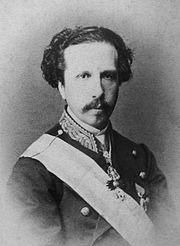Design
Design
Personality
Chart Properties
Your Cross represents the specific theme of your life. This cross embodies your unique potential & the lessons you're here to learn, providing a roadmap to fulfilling your life purpose.
We use the UTC birth time and date to do the calculations required to generate your Human Design chart.
Buy Tokens
Pay as you use, no expiry and no subscription required.Fidel Castro's Biography
Cuban liberator who successfully overthrew President Batista’s government 1 January 1959. Captured after a revolutionary attempt 26 July 1953, he was released from prison in 1955. When his guerrilla warfare deposed Batista, he established his position as dictator of Cuba. He has been diplomatically antagonistic to the U.S. since 1961.
He was the illegitimate third son of Angel Castro and Lina Ruz, a servant in the Castro household. Angel divorced Maria Castro and married Fidel’s mother after she had had borne him seven children. Castro was named after Fidel Pino Santos, a wealthy Oriente politician and friend of Don ?ngel. The Castro children remember their father as a beneficent rich man of a sugar plantation who looked after the welfare of his workers and also a man of extraordinarily violent temper, traits he passed on to son Fidel.
A good student, a charismatic leader with excessive energy and large appetites, Castro went to University law school. He married on 12 October 1948 and had one son, Fidel Jr. on 14 September 1949. In November 1952 he met the wife of a doctor with whom he had a long-term affair that lasted past his time in prison and a divorce.
On 10 March 1952, Batista seized power. Castro formed an insurrection group. He led a small group in a revolution on 26 July 1953. Arrested, he was found guilty and jailed. While in prison, he read and studied history, philosophy and politics up to his release on 15 May 1955.
On 7 July 1955, Castro left Cuba for Mexico City, where he met Che Guevara. On 5 December 1956 they began the revolutionary invasion. After defeat, he fled on 31 December 1957.
“My vocation is the revolution. I am a revolutionary, and revolutionaries do not retire.” Castro has stubbornly remained dictator of Cuba despite dissension in the ranks and numerous attempts to unseat him.
On 15 March 2001 Hallgeir Langeland, a left-wing member of the Norwegian Parliament, nominated Castro for the Nobel Peace Prize for his role in helping other nations.
On 31 July 2006, it was announced that the Cuban leader had temporarily handed the reins of government to his brother Raul while he underwent and recovered from emergency surgery to correct gastrointestinal bleeding.
On 19 February 2008, the ailing leader of Cuba announced that he was stepping down from power. On 24 February 2008, the Cuban National Assembly selected Fidel?s brother Raul Castro as President.
He died in the late evening of 25 November 2016, at age 90, in Havana.
Link to Wikipedia biography
Fidel Castro
Your Cross represents the specific theme of your life. This cross embodies your unique potential & the lessons you're here to learn, providing a roadmap to fulfilling your life purpose.
We use the UTC birth time and date to do the calculations required to generate your Human Design chart.






